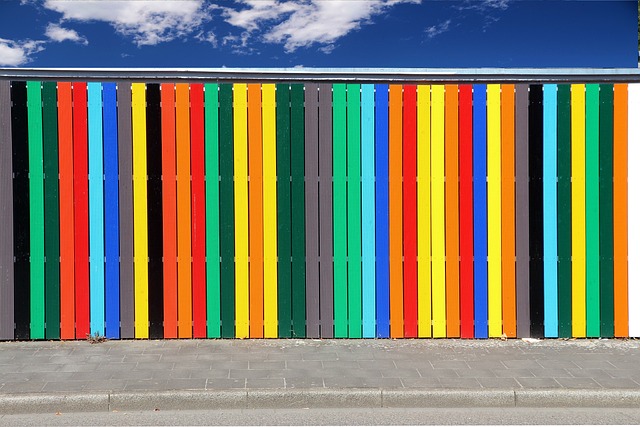Large properties present unique challenges when it comes to fencing, often requiring durable, expansive solutions without breaking the bank. This article explores a range of cost-effective fencing options tailored for extensive landscapes, from traditional materials reimagined to innovative natural barriers and DIY approaches. We delve into pre-built fence systems that streamline installation and offer long-term durability, along with maintenance tips ensuring your fence remains robust against the elements.
- Understanding Large Property Fencing Needs
- Traditional vs. Cost-Effective Options
- Natural Barriers: A Green Approach
- DIY Solutions for Budget-Conscious Owners
- Pre-Built Fences: Time and Money Savers
- Long-Term Maintenance: Tips for Durability
Understanding Large Property Fencing Needs
Fencing a large property presents unique challenges compared to smaller plots. The primary consideration is not just aesthetic appeal but also functionality, security, and cost-effectiveness, especially over an extensive area. Different sections of the property may require distinct fencing solutions—for instance, privacy fences for residential areas, secure perimeter fences for areas with valuable assets or livestock, and perhaps even specialized barriers to deter wildlife.
Large properties often have diverse terrain, including hills, valleys, and water bodies, which necessitate flexible fencing options that can adapt to these variations. Additionally, the choice of materials should balance durability against cost, with long-lasting yet affordable options being ideal. Understanding these multifaceted needs is crucial for selecting a fencing solution that serves both practical and aesthetic purposes over the long term.
Traditional vs. Cost-Effective Options
Many property owners often find themselves torn between traditional fencing options and cost-effective alternatives when looking to secure their large plots of land. Traditional fences, such as solid wooden or metal barriers, have long been the go-to choice due to their durability and aesthetic appeal. However, these options can be expensive, especially for extensive properties requiring lengthy fence runs.
Cost-effective fencing solutions, on the other hand, offer a more budget-friendly approach without compromising security. These modern alternatives, including chain link fences, vinyl or plastic barriers, and even electric fencing, provide durability, versatility, and in some cases, advanced features like adjustability and customizable height. By choosing these options, property owners can effectively secure their land while managing costs for large-scale projects.
Natural Barriers: A Green Approach
Many property owners are increasingly looking for environmentally friendly ways to secure their large plots, and natural barriers offer a cost-effective and sustainable fencing solution. Instead of traditional concrete or wooden fences, incorporating natural elements into your perimeter security can provide both aesthetic appeal and ecological benefits. One such option is using native plants as a living fence. These plants not only act as physical barriers but also support local ecosystems by providing habitat for wildlife and enhancing biodiversity.
Native shrubs, hedges, and trees can be strategically planted to create a natural boundary that blends seamlessly with the surrounding landscape. This approach requires less maintenance than traditional fencing and can be particularly effective in regions with diverse climates, offering resilience against extreme weather conditions. By choosing native species, you contribute to the preservation of local flora, ensuring a green and sustainable solution for your property’s security needs.
DIY Solutions for Budget-Conscious Owners
For budget-conscious property owners looking to enhance their outdoor space, DIY fencing solutions offer an appealing cost-effective alternative to professional installation. Many modern tools and materials make it easier than ever for homeowners to take on fencing projects themselves. From pre-assembled panels to do-it-yourself kits, a variety of options cater to different skill levels and preferences. Not only does this approach save money, but it also provides an opportunity for creative customization. Homeowners can choose from various styles, colors, and designs to match their property’s unique character.
With the right tools and a bit of patience, installing your own fence can be a rewarding endeavor. Many DIY enthusiasts find satisfaction in creating functional and aesthetically pleasing boundaries around their properties. Online tutorials and how-to guides offer step-by-step instructions for various fencing types, ensuring even novice do-it-yourselvers can achieve professional results. By taking on this project independently, owners retain control over the design and quality while reaping the financial benefits of a DIY approach.
Pre-Built Fences: Time and Money Savers
Pre-built fences are an excellent option for large property owners seeking a cost-effective solution that saves both time and money. These ready-to-install fencing systems come in various styles, materials, and sizes, offering a quick and efficient way to secure your land. By choosing pre-built options, you avoid the extensive labor costs associated with custom fence construction, making it an attractive choice for those on a budget.
The convenience of pre-built fences is undeniable, as they can be easily transported and assembled, reducing the need for specialized equipment and skilled laborers. This time-saving aspect allows property owners to focus on other tasks while ensuring their land is securely fenced. Moreover, these fences often come with warranties, providing peace of mind and long-term value.
Long-Term Maintenance: Tips for Durability
When considering fencing solutions for large properties, long-term maintenance is an essential factor to ensure durability and longevity. Regular cleaning and inspection are key; removing debris, treating rust, and fixing any damaged sections promptly will prolong the life of your fence. The use of high-quality materials, such as galvanized steel or durable vinyl, can significantly reduce maintenance needs and resistance to weather conditions.
Additionally, planning for seasonal changes is crucial. In colder regions, preparing the fence for winter by sealing metal joints and protecting wooden parts from freeze-thaw cycles is vital. For areas prone to extreme weather, reinforcing certain sections or using impact-resistant materials might be necessary. By implementing these simple yet effective maintenance tips, you can enjoy a cost-effective fencing system that stands the test of time.
